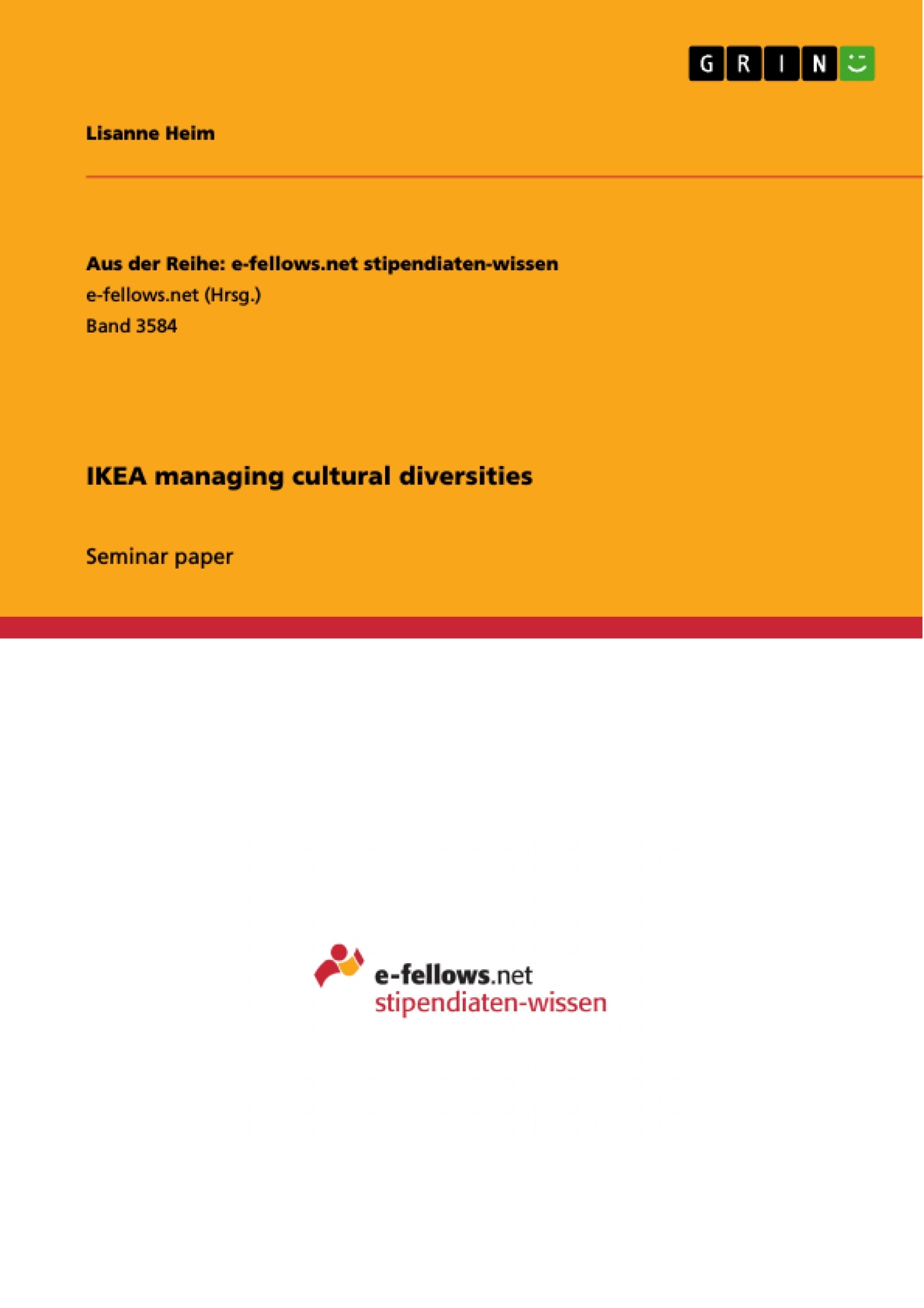This essay answers the following questions: What type of organizational culture is most representative of IKEA? What are three things that IKEA had to learn in order to do business effectively in the United States?
Since the foundation of IKEA in 1943 by Ingvar Kamprad, the company has developed and changed considerably; from a small Swedish furniture distributor to an internationally successful company and the only global player in the furniture distribution industry.
Inhaltsverzeichnis (Table of Contents)
- 1. Introduction
- 2. Main Part
- 2.1 What type of organizational culture is most representative of IKEA?
- 2.2 What are three things that IKEA had to learn in order to do business effectively in the United States?
- 3. Conclusion
Zielsetzung und Themenschwerpunkte (Objectives and Key Themes)
This case study aims to analyze IKEA's expansion into the US market, highlighting the challenges faced and lessons learned. It examines how IKEA's organizational culture and business strategies needed to adapt to the American context.
- Adapting IKEA's organizational culture to the US market
- Understanding and responding to differences in national preferences
- The impact of cultural dimensions on business strategies
- The challenges of international expansion for a globally recognized brand
- Balancing global brand consistency with local market needs
Zusammenfassung der Kapitel (Chapter Summaries)
1. Introduction: This introductory chapter sets the stage by introducing IKEA, its global success, and its unique business model characterized by affordability, flat-pack furniture, and a distinct company culture. It highlights IKEA's significant presence in Western Europe and its expansion challenges in the US market. The chapter establishes the study's purpose: to analyze what IKEA learned to expand successfully into the US.
2. Main Part: This section delves into the core issues of the case study. It is divided into two subsections. The first explores IKEA's organizational culture, describing it as an "Incubator Culture" characterized by informality, openness, equality, and employee empowerment. The second subsection focuses on three key challenges IKEA faced in the US market: adapting its corporate culture to accommodate the different power distance, individualism, and masculinity prevalent in American business; adjusting its product range to suit American consumer preferences; and recognizing and responding to the different cultural values between Sweden and the US.
Schlüsselwörter (Keywords)
IKEA, organizational culture, international expansion, cultural adaptation, US market entry, Hofstede's cultural dimensions, power distance, individualism, masculinity, national preferences, consumer behavior, global business strategy, case study.
IKEA Case Study: Frequently Asked Questions
What is the purpose of this case study?
This case study analyzes IKEA's expansion into the US market, focusing on the challenges encountered and the lessons learned. It examines how IKEA adapted its organizational culture and business strategies to succeed in the American context.
What are the key themes explored in this case study?
The key themes include adapting IKEA's organizational culture to the US market, understanding and responding to differences in national preferences, the impact of cultural dimensions on business strategies, the challenges of international expansion for a globally recognized brand, and balancing global brand consistency with local market needs.
What is IKEA's organizational culture described as, and how did it need to adapt in the US?
IKEA's organizational culture is described as an "Incubator Culture," characterized by informality, openness, equality, and employee empowerment. In the US, IKEA needed to adapt this culture to accommodate the different power distance, individualism, and masculinity prevalent in American business.
What were three key challenges IKEA faced in the US market?
Three key challenges were: adapting its corporate culture to the differing cultural dimensions of the US market; adjusting its product range to suit American consumer preferences; and recognizing and responding to the different cultural values between Sweden and the US.
What are the main topics covered in each chapter?
Chapter 1 (Introduction): Introduces IKEA, its global success, its unique business model, and its expansion challenges in the US, setting the stage for the study's analysis of IKEA's successful US expansion. Chapter 2 (Main Part): Explores IKEA's organizational culture and the three key challenges faced in the US market, detailing the adaptation required for success. Chapter 3 (Conclusion): [Content not explicitly detailed in provided text].
What keywords are associated with this case study?
IKEA, organizational culture, international expansion, cultural adaptation, US market entry, Hofstede's cultural dimensions, power distance, individualism, masculinity, national preferences, consumer behavior, global business strategy, case study.
What type of organizational culture is most representative of IKEA?
IKEA's organizational culture is described as an "Incubator Culture," characterized by informality, openness, equality, and employee empowerment.
What three things did IKEA have to learn to do business effectively in the United States?
IKEA had to learn to adapt its corporate culture to American business norms (power distance, individualism, masculinity), adjust its product range to American consumer preferences, and understand and respond to the differing cultural values between Sweden and the US.
- Quote paper
- Lisanne Heim (Author), 2019, IKEA managing cultural diversities, Munich, GRIN Verlag, https://www.grin.com/document/542838




